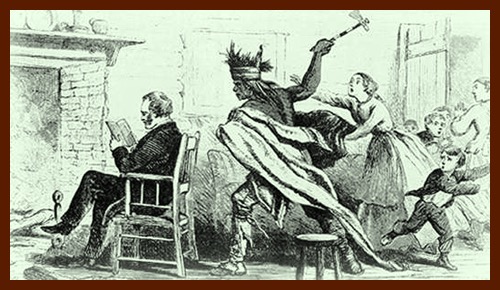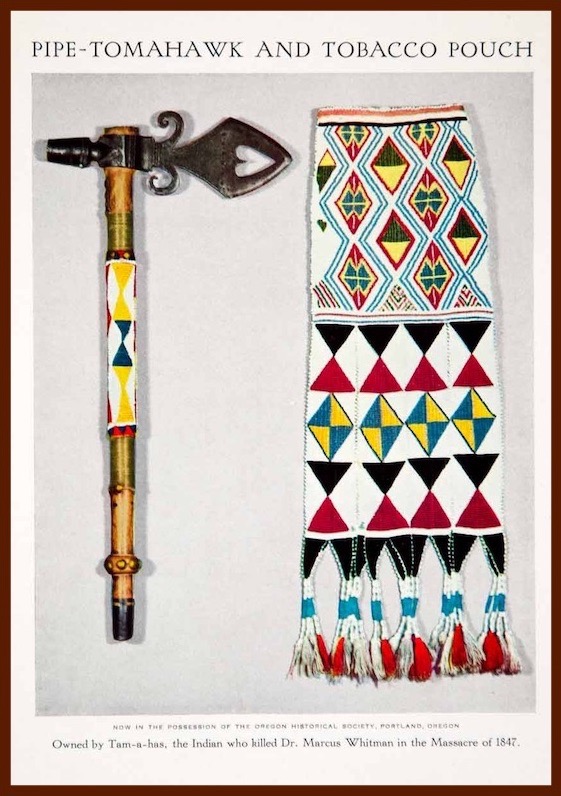Writing about her grandparents for the Belleville Telescope in 1958, Orel Poole presented an intriguing anecdote Orel Jane Lovewell loved to tell about her husband's time in the Army in the 1860’s. It seems to have been the only story to survive from his service with the 3rd California Volunteer Infantry, perhaps the only one he ever chose to share.
A tribe of warring Indians had withdrawn into a deep mountain gorge after attacking a settlement called “Settlers Hill.” White Lily, knowing the Indians ways, located the Indians for the Commander. The Indians were taken completely by surprise - many Indians were killed; their winter supply of hundreds of pounds of dried berries, grasshoppers, and other loot was burned that the Indians had stolen. But alas! White Lily was slain during the battle. The soldiers buried him with military honors for they felt deep sorrow at the loss of such a brave and true soldier. The loss of his valuable assistance to the company was gravely felt.
It took me months of sifting through Army dispatches to realize that, like so many of the traditional Lovewell family tales, this one is composed of distinct threads that have become entangled over time. Thomas’s “A” Company did make a successful fight against a band of entrenched marauders like the one described by Mrs. Lovewell. Then, two years later, Oregon Volunteers attempted a disastrous assault on Paulina’s renegade Snakes that resulted in the deaths of several soldiers and a beloved Deschutes Chief of Scouts. His name was not "White Lily," but “Whitley.” He was fondly remembered as “Old Stock” Whitley, and I’ve written about him six times over the past two years, most recently in April of 2015.
Back then I lamented that while there are no photographs of Stock Whitley, we do have some wonderful descriptions and anecdotes that provide a vivid sketch of this colorful character who must have made quite an impression on Thomas Lovewell. Lovewell apparently never spoke of his Captain, Thomas Ketcham, a compassionate man who wrestled with the morality of the Army’s mission in California, or his blood-and-guts regimental commander, Colonel Edward Patrick Connor, who led the charge at the Bear River Canyon Massacre. Neither does he seemed to have mentioned that his own brother Alfred died while the two were cooped up together in the desert fortress of Fort Churchill. Whitley’s story, however, must have been too good to pass up.
Now, about the lack of a photograph of Stock Whitley - I may have ruled it out too soon. There was one once, and it may still exist somewhere, squirreled away in the archives of the State of Oregon. After his death in 1864, some of Whitley’s old acquaintances submitted tributes to him intended for publication in the Western press, while his widow presented a few family keepsakes to friends at the Warm Spring Reservation, to help keep her husband’s memory alive. Letters about her gifts, among them a tomahawk with a notorious but historic past, were published in the Journal of the House of Representatives of the State of Oregon.
This tomahawk pipe was procured by Tam-ma-haas, the big murderer from the Crow Indians, and afterward used by him at the murder of Dr. Whitman, and was the instrument of Dr. Whitman’s death. Tam-ma-haas was hung at Oregon city for this murder and the tomahawk was inherited by his brother Stonch, who presented it to the chief, Stock Whitley, as an extraordinary token of esteem. The undersigned has heard Stock Whitley tell the history of the pipe, and he was acknowledged to be a truthful Indian.
In the commencement of this season, Stock Whitley carried it with him when he went to war with the Snakes, and it was in the first battle with the Snakes, where Lieut. Watson was killed outright, and Stock Whitley was mortally wounded. The pipe, after the death of Stock Whitley, was presented by his family to Donald McKay, who presented it to Mr. Wm Logan.
Wm. C. McKay
Physician at Warm Spring Reservation
A popular sketch of the 1847 murder of Dr. Whitman and a dozen others, turns out to be a fanciful depiction (The doctor was struck from behind, but while standing outside his kitchen door) which did not even get the tomahawk quite right. As the photograph at the bottom of the page shows, the weapon was both more ornamental, and more lethal-looking. A letter from H. W. Shipley underlines the fact that the donated tomahawk “is known to be the very instrument used to complete the bloody act of their massacre, a generation since, and has been purchased as a memento to be treasured in the archives of the state…”

This tomahawk has been treasured by the savages themselves, as a memorable thing. By the Cayuses it was presented to their ally Stock Whitley, a distinguished chief, and one of the bravest warriors that fought us in the Indian wars east of the mountains; and when he fell on his last war path, battling beside the white man against our common enemy, the Snakes, the old chief left it as an heir-loom to his name and race…
Accompanying it, is the photograph of Stock Whitley, and the ornamental pouch he used to wear.
I am very respectfully,
Your obedient servant,
H. W. Shipley
I had read before that the gifts to the State of Oregon involved a “likeness” of Whitley, but always assumed that this referred to some stylized figure, perhaps an ornament on the tobacco pouch. Not only was it a genuine photograph, but as another letter attests, it couldn’t be a portrait of anyone else.
We, the undersigned certify, that we are well acquainted with Stock Whitley, and that the likeness of him taken by _____ Wood and presented to the sanitary committee at its recent state fair we have examined, and the same is a correct likeness. Signed by
C. R. Meigs
A. J. Borland
Salem, October 1, 1864
So, if someone runs across a photograph of a tall, paunchy, noble-looking Chief of Scouts from the Warm Springs Reservation, taken by a photographer named Wood, ca. 1860, I believe I can identify the subject. Until I pin down what might be the only photograph ever taken of Stock Whitley, I’ll have to be content with a picture of his tobacco pouch, and the famous pipe-tomahawk which, appropriately enough, seems to be the Indian equivalent of a sword that could double as a ploughshare.
